Bathing has come a long way from the ancient days of outdoor bathing – it’s now often seen as a form of relaxation and self-care in the privacy of one’s home. Recognizing this transformation, bathroom design has also evolved into a multifaceted interplay between aesthetics and functionality. It involves careful thought into elements like color schemes, tiles, fixtures, lighting, and more. This exploration enhances our understanding of efficient layout planning, and brings enlightenment about the ongoing design trends and budget-friendly redesign ideas. These diverse facets of bathroom interior not only add beauty to your space but can also increase the value of your home.
Basics of Bathroom Interior Design
Bathroom Interior Design
Bathroom interior design requires careful consideration and planning, as it plays a crucial role in maintaining the aesthetic and functionality of a living space. To design an appealing and effective bathroom, you must take into account several elements, including color schemes, tile selection, and fixtures.
Color Schemes in Bathroom Design
Color schemes aid in setting the overall mood and style of the bathroom. Light colors like white, beige, or pastels can make a small bathroom look larger and more spacious, while dark colors add a sense of luxury and sophistication. Color also plays a significant role in lighting effects. For instance, lighter shades reflect natural light, brightening the restroom, while darker shades create a more intimate ambiance.
Tile Selection for Bathrooms
When choosing tiles for a bathroom, you want to consider the size, color, pattern, and material of the tiles. Larger tiles can make a small bathroom appear bigger, while smaller tiles can add texture and interest. The color and pattern of the tiles should complement the overall color scheme of the bathroom. For example, neutral or earth tones can create a calming and relaxing ambiance, while vibrant colors or patterns can add a lively and energetic feel.
In terms of material, porcelain, and ceramic tiles are popular choices due to their durability, water resistance, and variety of styles. Natural stone tiles, like marble or granite, can add a touch of luxury and sophistication but may require more maintenance.
Bathroom Fixtures
Bathroom fixtures refer to the sinks, toilets, bathtubs, and showerheads installed in the bathroom, they significantly contribute to the room’s functionality and aesthetics. Stylish fixtures can elevate a bathroom’s design and serve as focal points, while efficient fixtures can promote water conservation.
When selecting fixtures, consider the style of your bathroom. For a modern look, opt for fixtures with clean lines and sleek finishes, such as chrome or stainless steel. For a more traditional or rustic style, consider fixtures with more intricate designs and finishes, like bronze or copper.
There is a wide variety of fixture types, from freestanding tubs to wall-mounted sinks, that cater to different needs and preferences. It’s important to select fixtures that not only complement your interior design but also fit comfortably within the size of your bathroom without crowding the space.
Desiging a bathroom is a rewarding yet challenging task that requires a fine balance between aesthetic appeal, functionality, and individual preferences. To create a harmonious and captivating space which improves the entirety of your living atmosphere, one must be proficient in understanding and executing these principles in their bathroom design.
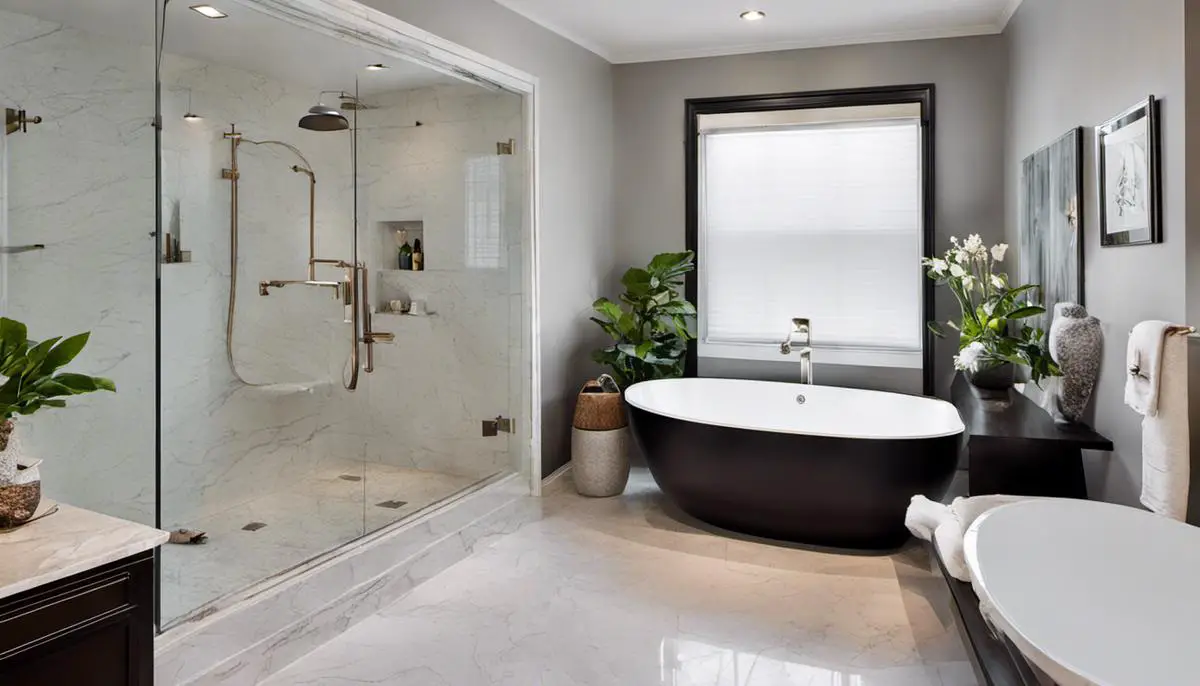
Bathroom Layout and Space Planning
Gearing Towards an Effective Bathroom Layout and Meticulous Space Planning:
Any noteworthy bathroom interior design hinges on efficient layout planning and utilization of space. By no means should the placement of crucial bathroom features, such as the toilet, sink, shower, and bathtub, be random. It needs to be a product of careful deliberation assessing space availability, future upkeep, and user comfort. For instance, the toilet should be positioned to afford sufficient room and privacy. Professionals generally suggest a minimum of 15 inches from the center to the wall, and up to 18 inches for high-end designs, with an additional space of 24 inches provided in front.
The location of the sink is another pivotal element. With the sink often being the focal point of any bathroom, it should reside in a convenient location that ensures seamless accessibility for users. Ideally, a minimum of 30 inches should be reserved from the center of the sink to any adjacent wall. Additionally, the space in front of the sink should maintain at least 21 inches of clearance for easy usability.
However, showers and bathtubs are more demanding in terms of spatial requirements. Standard bathtubs typically necessitate a minimum allotment of 60 inches in length, and 30 to 34 inches in width. Showers, on the other hand, require at least a 36 by 36 inch space. Further, according to the regulations set by the American Disabilities Act (ADA), bathrooms need to accommodate a turning radius of 60 inches for wheelchairs, allowing a full 180-degree turn.
Appropriate Storage Solutions
One of the often overlooked factors in bathroom interior design is the need for effective storage solutions. Inefficient storage can leave the bathroom looking cluttered and unkempt, creating a stressful environment rather than a relaxing one. Bathroom storage should be designed creatively to utilize available space without causing obstruction.
Vanity units under the sink provide a smart storage solution, effectively utilizing the otherwise ‘dead’ space. Wall-mounted cabinets also offer essential storage without eating into the floor area, while recessed wall niches in the shower or bath area provide a convenient spot for holding bath products. Additionally, mirrored cabinets above the sink could provide two functions in one, offering storage for small items like cosmetics and medicines while serving as an essential bathroom fixture.
Over the toilet storage solutions can be a game-changer in smaller bathrooms. Shelves or cabinets installed above the toilet can provide a significant amount of storage without encroaching on valuable floor real estate. Meanwhile, towel bars and hooks should be placed near the shower or bathtub for convenience, but also in a location where they do not become a hindrance to movement.
Striking a Balance Between Function and Style
In the world of bathroom interior design, it’s vital to strike a fine balance between functionality and aesthetic appeal. The practical aspects such as efficient use of space and smart storage options are key considerations, yet equally important are the design elements which contribute to the bathroom’s visual appeal. This can be achieved through the careful selection of fixtures and finishes that not only withstand the typical moisture-heavy conditions of a bathroom, but that also complement the overall style of the room. Decisions around storage solutions also need to be thoughtful, ensuring they integrate seamlessly into the bathroom’s design aesthetic.

Lighting in Bathroom Design
Highlighting the Importance of Proper Bathroom Lighting
The impact of lighting on a bathroom’s overall interior design cannot be overstated. Proper lighting enhances the room’s functionality – making daily tasks like grooming easier and safer – and makes the room feel more comfortable and relaxing. Task lighting helps with precision work like makeup application and shaving, ambient lighting provides general illumination for everyday functionality, and accent lighting is used to spotlight particular design features. A well-lit bathroom not only boosts the room’s practical aspects but also bolsters its style, creating a welcoming atmosphere that beautifully showcases the bathroom’s design.
Types of Bathroom Lighting
When it comes to bathroom lighting, there are several types available. Task lighting is designed to provide bright, shadow-free light in areas where specific tasks are carried out, like the vanity where you might apply makeup or shave. Ambient lighting, on the other hand, replaces natural light and provides overall illumination for the space. Accent lighting enhances the bathroom’s aesthetics by drawing attention to design features such as beautiful tilework or artwork. Last but not least, decorative lighting adds personality and style to a bathroom, often serving as a bathroom’s visual centerpiece.
Lighting Installation in the Bathroom
Lighting installation in the bathroom should always be performed by a professional to ensure correct placement and adherence to national and local electrical codes. Lights should be positioned to avoid shadows or harsh glares. Vanity lighting, for instance, is best installed on either side of the mirror, ideally at eye level, to provide ideal illumination for grooming and reduce shadows. For general illumination, recessed lighting installed in the ceiling works best. Shower areas should have enclosed vapor-proof downlights for safety.
Layering Lights in Bathroom Design
Layering different types of lighting in a bathroom improves functionality and enhances aesthetics. Start with task lighting around mirrors and arrange other lights accordingly. Ambient light helps fill in shadows and soften the contrasts, while accent and decorative lights add depth and dimension. By adjusting the intensity of different layers, you can create various moods, from the bright, fully illuminated morning routine setup, to a soft, relaxing bath-time ambiance. A good layered-lighting plan gives you the desired illumination levels for different tasks and times of day, thus optimizing your bathroom’s comfort and usability. Consider LED lights for energy efficiency or dimmable versions to further add flexibility to your lighting design.
Choosing the Right Bathroom Light Fixtures
The right fixtures can make a big difference in your bathroom’s lighting design. When selecting fixtures, functionality and style both matter. Consider the size of the bathroom, the color scheme, and the overall design style before making your choice. Sconces, pendants, and light bars can add a contemporary, stylish touch to your space, while traditional fixtures like chandeliers can provide a sense of classic elegance. Water-resistant fixtures are crucial for areas near the shower or tub. Always ensure that fixtures complement other design elements in the bathroom and contribute to a harmonious, cohesive look.
Embracing Natural Light
Creating an inviting bathroom space extends beyond just fixtures and finishes. One major factor in setting the right mood is the use of natural light. Sunlight offers a soft, warming effect that artificial lights struggle to replicate. Furthermore, it enhances overall wellness and lifts the mood. To enhance the ingress of natural light, consider elements like skylights, larger windows, and gossamer window treatments. It’s crucial, however, to align this with maintaining necessary privacy levels.
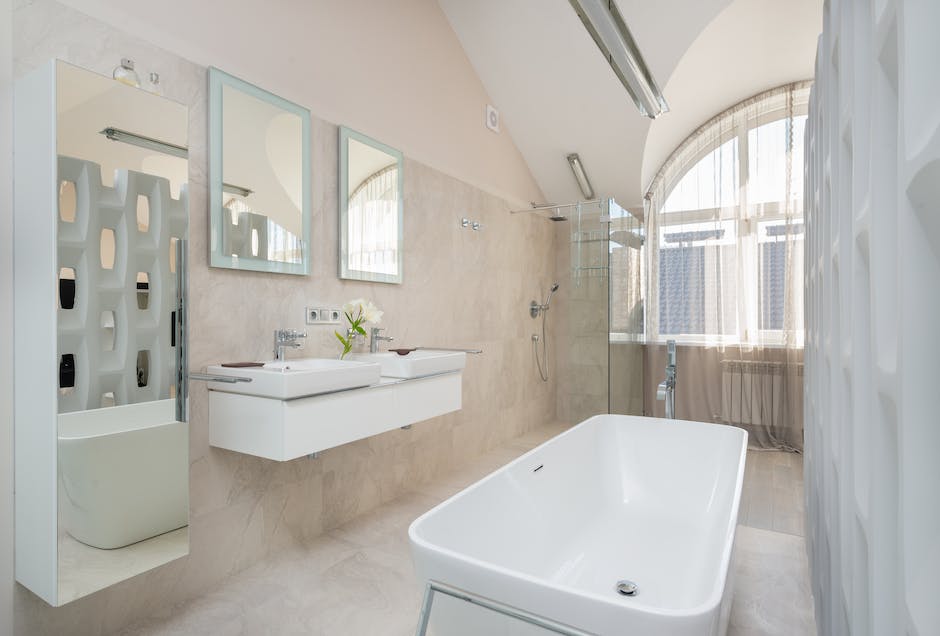
Trends in Bathroom Design
Entering the Era of Contemporary Bathroom Design
In a modern home remodel, an emphasis on aesthetic beauty, comfort, and practicality shapes the bathroom interior design. Emerging trends spotlight innovative usage of materials. While ceramics and porcelain remain popular, materials like quartz and engineered stone are gaining popularity due to their impervious nature and durability.
Witness a resurgence in the favor of marble for its timeless elegance. Glass tiles are also trending, owing to their high versatility and the customization options they offer. They bring a variety of designs, colors, and transparency levels to the table.
Statement pieces and bold walls are taking a leap into bathroom design, adding unexpected visual interest. Standalone tubs and vessel sinks are now sought after for the distinct charm. Similarly, walls adorned with striking colors or unique tiles are becoming signature design elements.
Futuristic Technology in Sanitary Ware and Fixtures
Bathroom fixtures have seen immense technological advancement. Touchless technology is on the rise, with faucets and toilets that operate with motion sensors gaining popularity. This feature not only adds a modern touch to the bathroom but also helps in conserving water and maintaining cleanliness.
Heated floors and towel racks have become no less than a necessity in contemporary bathrooms. They offer comfort and contribute to an overall luxurious experience. Alongside the above, integrated lighting is another design trend. Offering illumination directly from mirrors or showers gives the bathroom a sleek and futuristic look.
Color and Texture Trends
Opposite colors on the spectrum are trending. While neutral hues like beige and gray have been favorites over the years, bold and vibrant colors like dark blues, greens, and even black are now gaining popularity. Statement wallpapers and tiles in bold patterns and colors are used to make the bathroom design pop.
Texture is another defining design aspect growing in preference among homeowners. Whether it’s the use of textured tiles for an accent wall or choosing fixtures with a brushed or hammered finish, texture adds an exciting visual element to the bathroom design.
Innovative Design Styles
In terms of styling, minimalist and modern designs are in trend. The ‘less is more approach’, clean lines, and uncluttered spaces reflect this idea. At the same time, vintage designs are making a comeback. Clawfoot tubs, pedestal sinks, ornate mirrors, and brass fixtures are a few components of the vintage style resurgence.
The realm of bathroom interior design is always evolving; however, some core tenets remain unchanged. These include prioritizing a pleasing aesthetic, functionality, and comfort in the design. As such, an increasing number of designers are merging traditional charm with contemporary innovation, creating an array of unique customization options for homeowners.
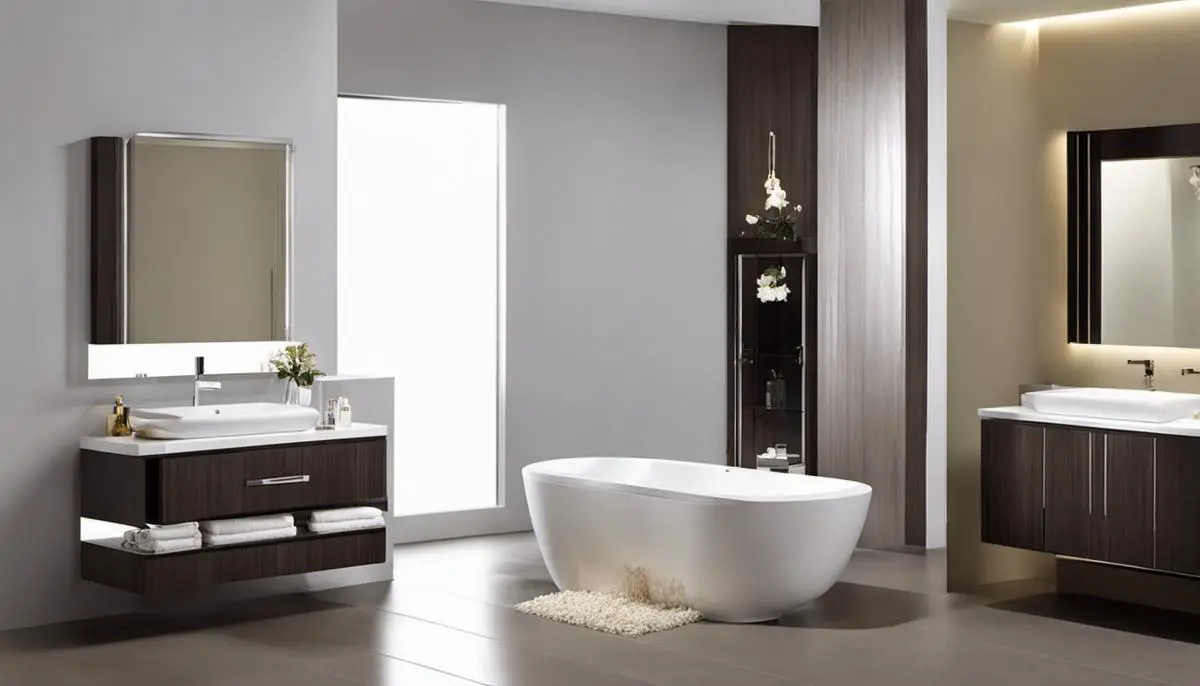
Budget-Friendly Bathroom Interior Design Tips
Achieving Bathroom Makeovers on a Budget
Transforming the look of a bathroom does not necessitate a substantial investment. Through strategic planning, smart and savvy shopping, and some DIY efforts, you can refresh and upgrade your space while keeping a tight rein on your finances. Whether you opt for a total overhaul or minor modifications, even the smallest changes can make a significant difference in the bathroom’s overall ambiance.
Choosing Value Over Cost
When considering a bathroom redesign, it’s important to focus on where to splurge and where to save. Items such as faucets, showerheads, and cabinet hardware may require a bit of an investment, but they undergo frequent use and should be durable. On the other hand, accessories like decor items, shower curtains, and rugs can be secondhand finds or bargain buys as they can be easily replaced when they wear out or when you want a change.
DIY Options
Approaching your bathroom remodel as a DIY project is a great way to save money. For instance, instead of replacing your vanity, consider a fresh coat of paint and new hardware. Doing the work yourself eliminates labor costs, and learning a new skill can be rewarding. However, always be sure to do thorough research or seek expert advice before undertaking any significant DIY project to avoid costly mistakes.
Repurposing and Recycling
Being creative with what you already have is another money-saving approach to a bathroom makeover. Use leftover paint to create a feature wall, or repurpose old furniture for new storage solutions. Upcycle jars and bottles to make unique accessory holders.
Choosing Cost-Effective Materials
Natural materials like stone and wood can drive up the cost of a remodel project. There are plenty of less expensive solutions like laminate flooring or ceramic tiles that can give the same aesthetic appeal at a fraction of the cost.
Shopping Tips
Always look out for sales, and don’t shy away from pre-loved items. Check out auctions, yard sales, or discount stores for deals on everything from vanities to mirrors to towel bars. Remember that mixing and matching can add character and doesn’t have to look mismatched if executed well.
Efficient Fixtures and Appliances
Investing in fixtures and appliances that conserve water, like a low-flow toilet or showerhead, can lead to long-term savings. While the upfront cost may be a bit higher, the savings on water bills over time make it a smart investment.
In conclusion
While interior bathroom design on a budget can be a challenge, with creativity and careful planning, you can revamp your space into one you love without breaking the bank.
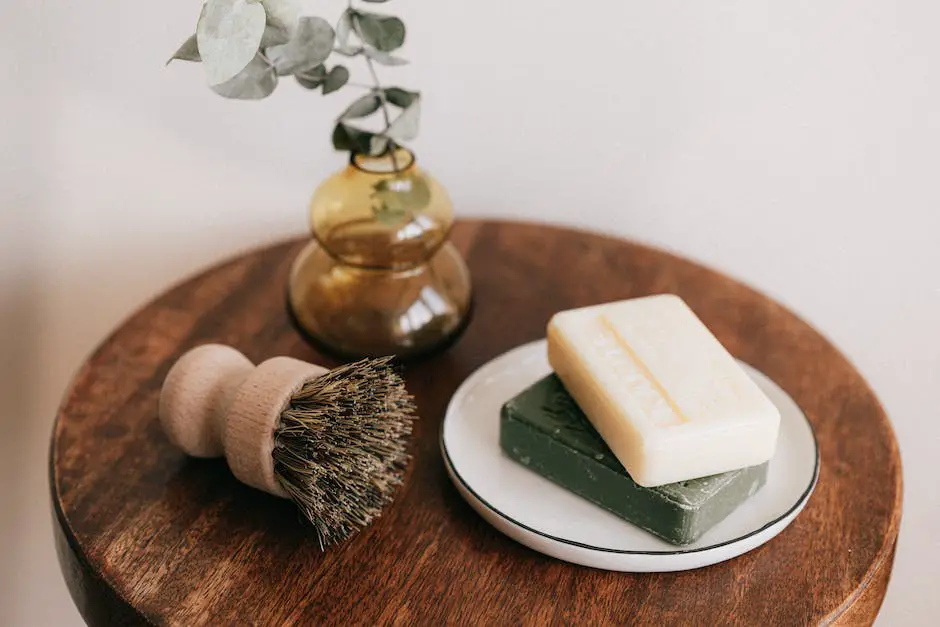
Designing a bathroom is not just a project, but an art that encapsulates personal style and practical details. One can experiment with bold color palettes or maintain a serene ambiance with soft neutrals, play with patterns in tiles or keep it minimalistic. Space planning and the practical placement of fixtures take us a step closer to ease of use, and the inclusion of perfect lighting accents these decisions. Whilst keeping ourselves abreast of the latest trends, we should also consider our budgets. A well-thought-out plan and a knack for resourcefulness can lead to a beautiful bathroom makeover without causing financial strain, thus transforming this essential space into a personal sanctuary. Hence, your bathroom can be a blend of utility and beauty where innovation meets comfort.

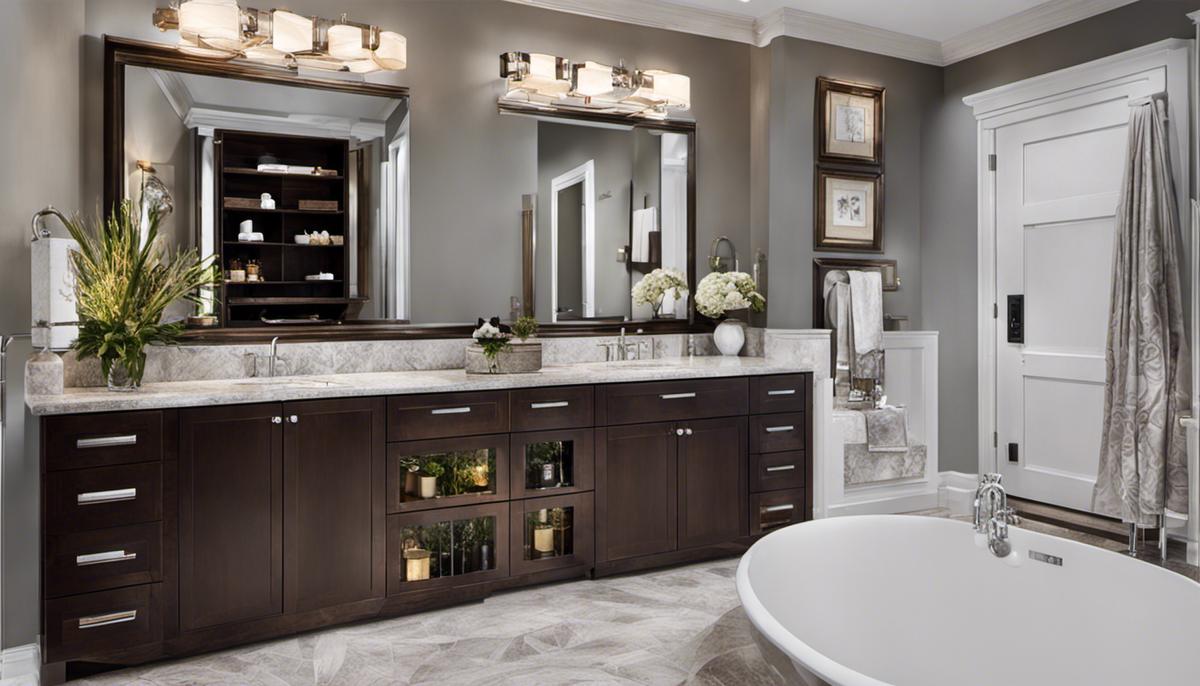
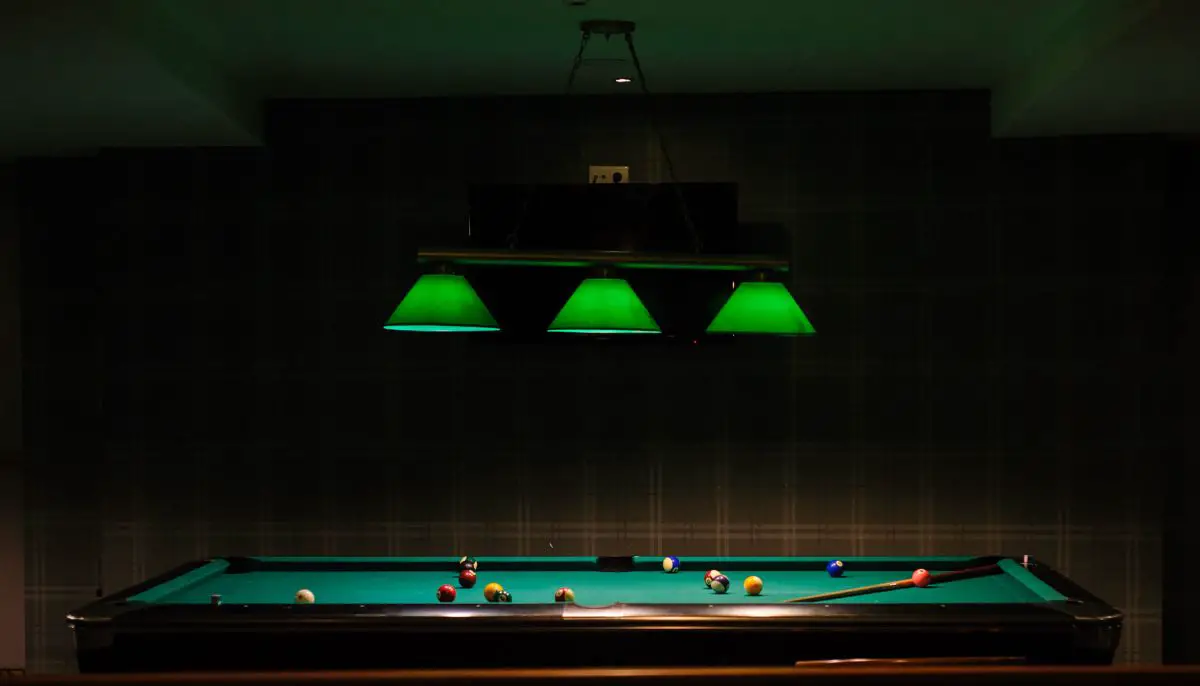
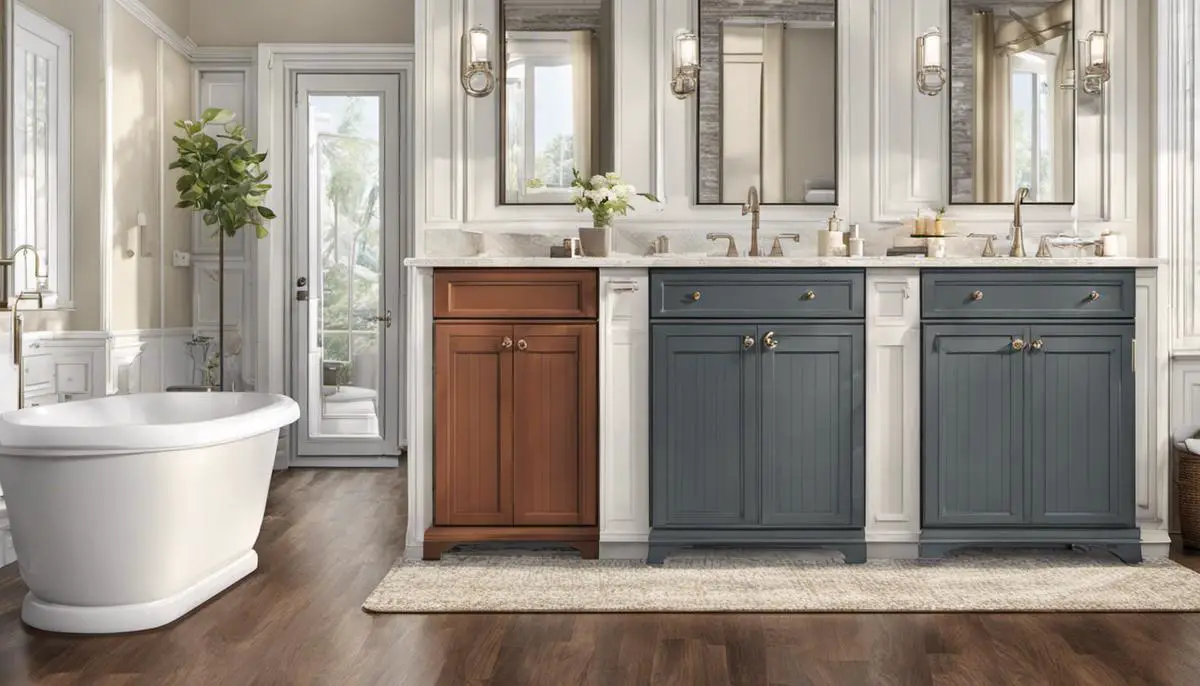
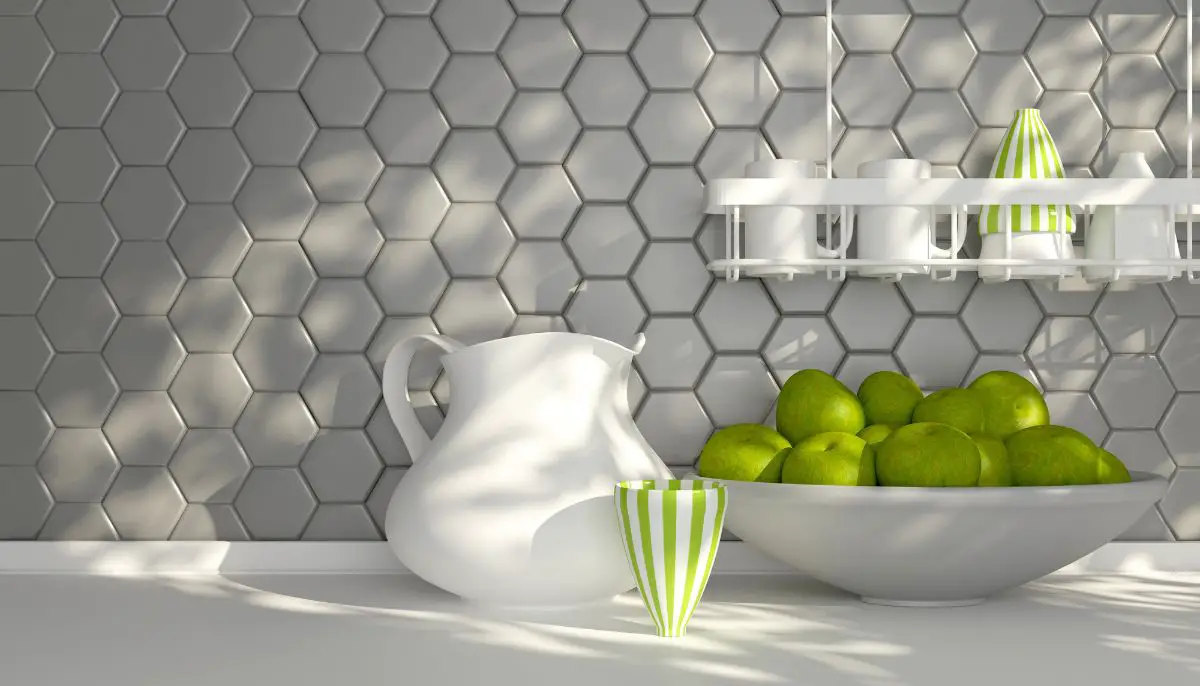
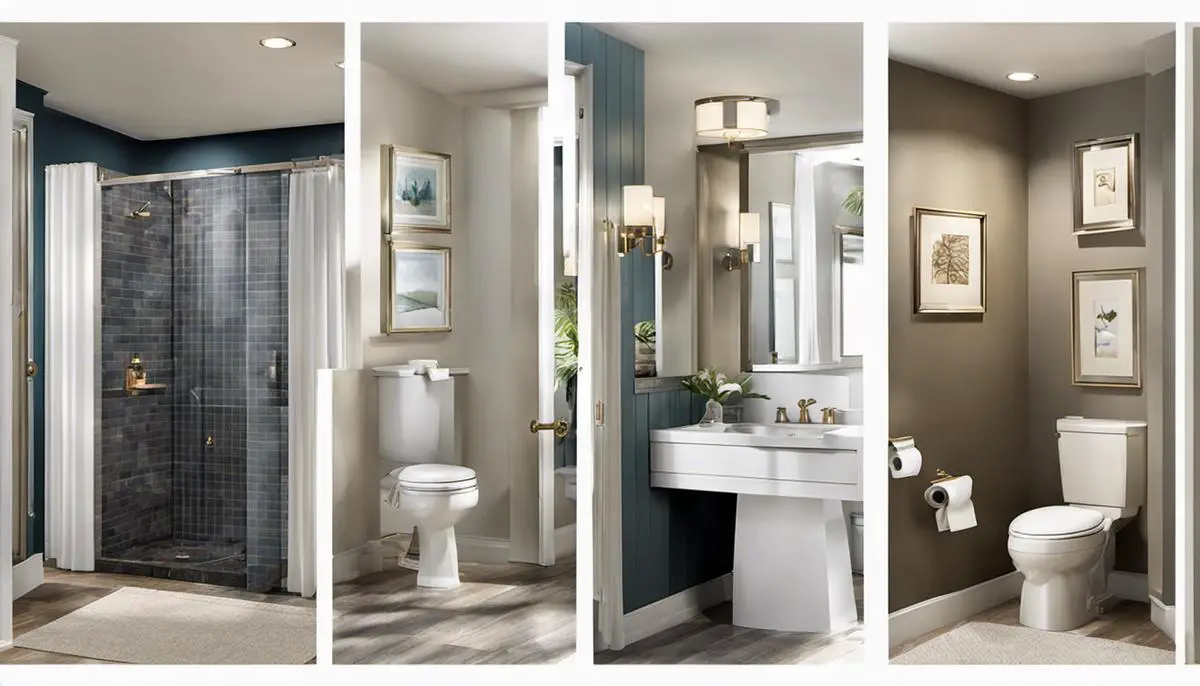
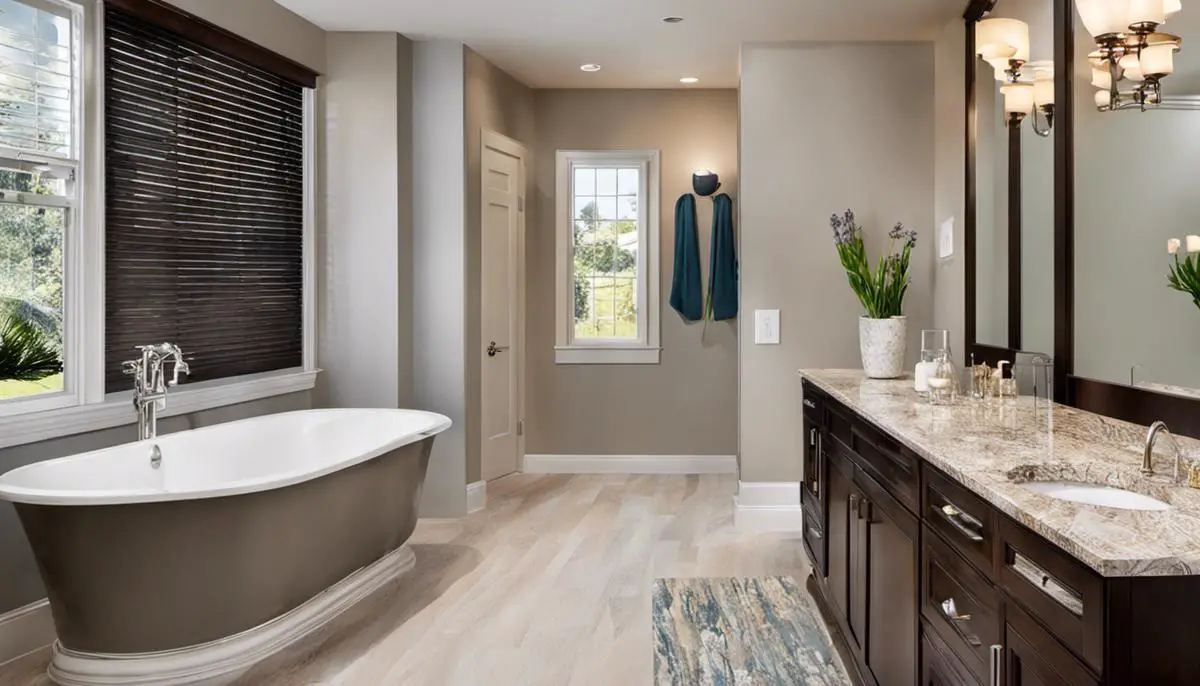
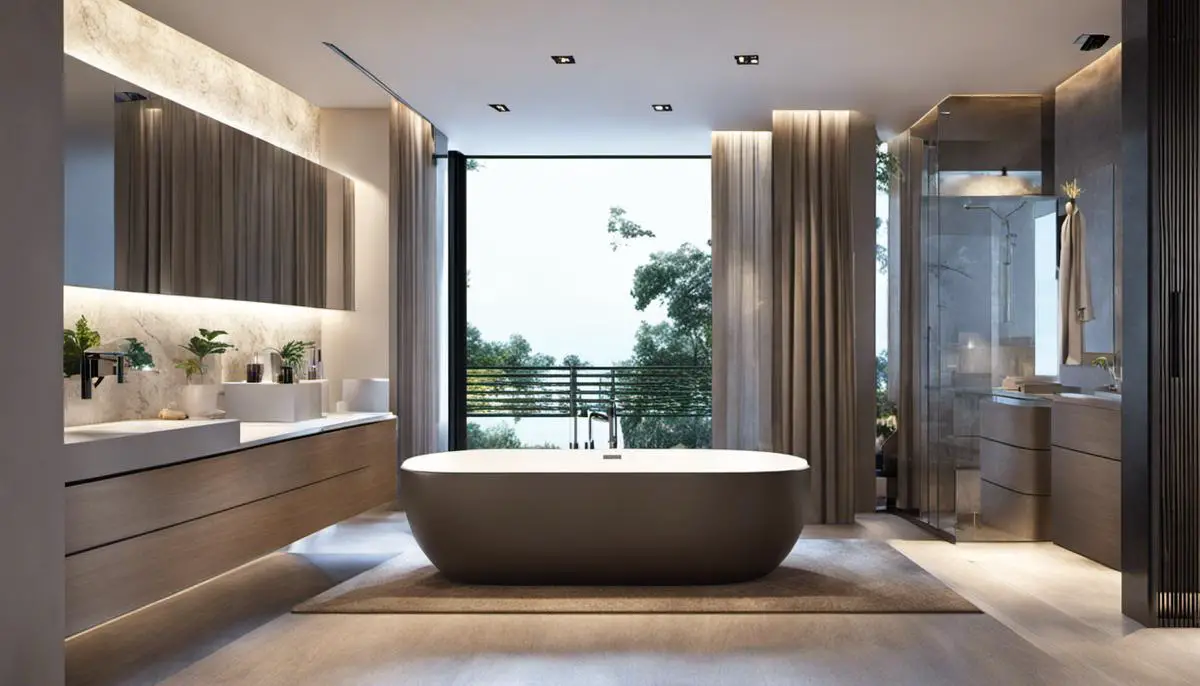

Leave a Reply